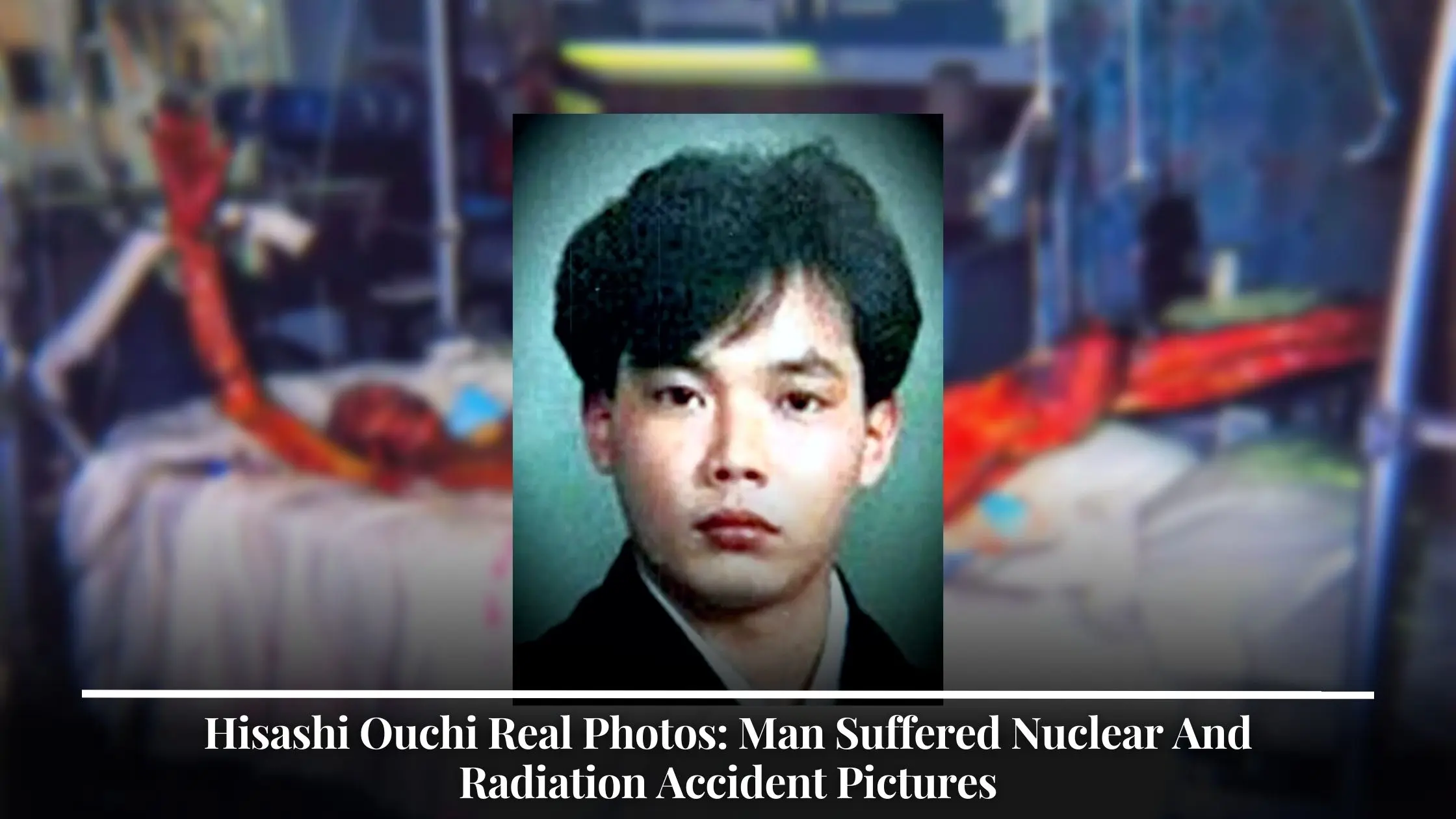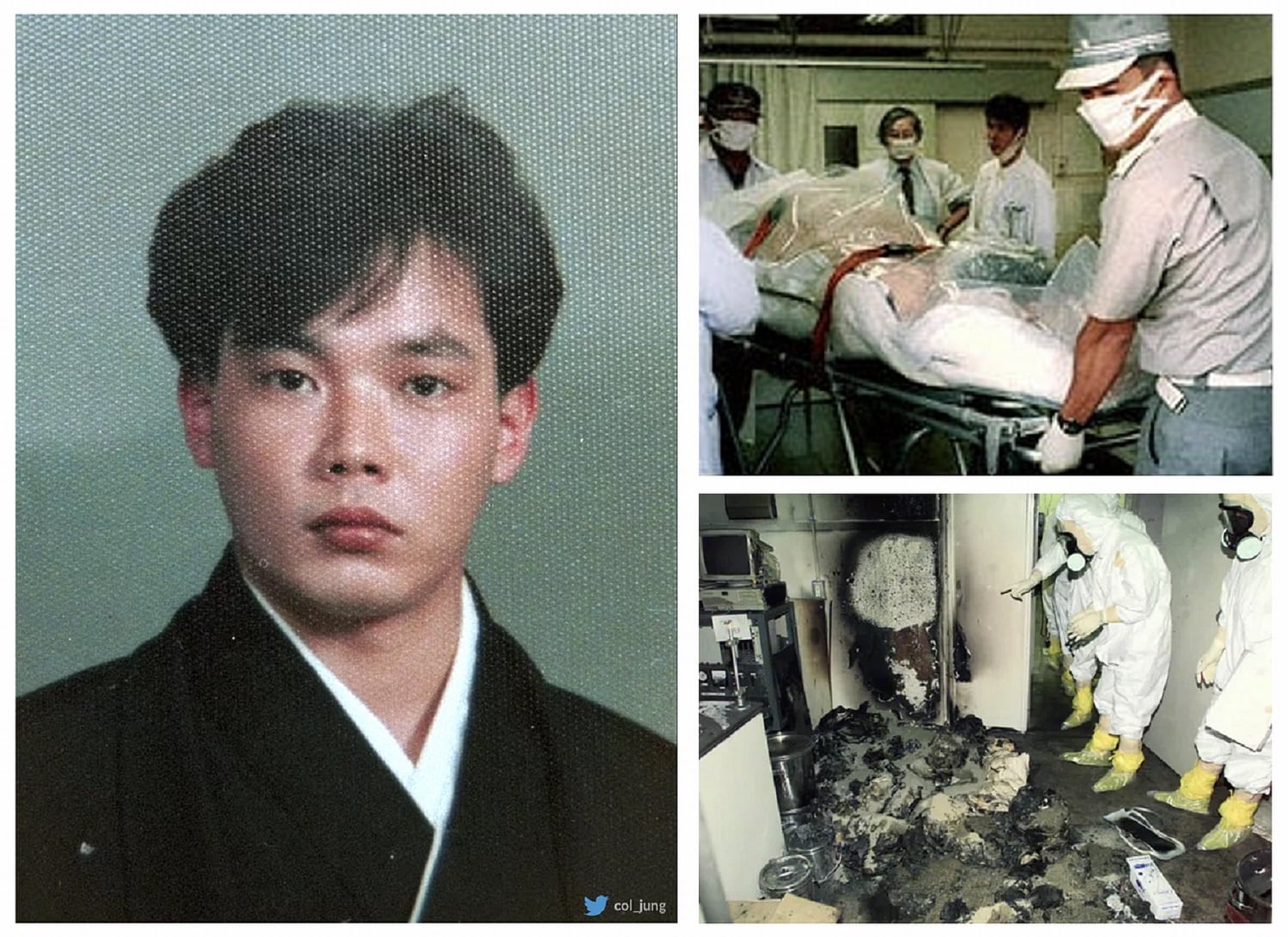The year 1999 brought with it a truly shocking event at a nuclear facility in Tokaimura, Japan, an incident that, quite frankly, shook many people. It involved a man named Hisashi Ouchi, whose experience became a deeply sad and very public account of the extreme dangers that can come with certain types of work. What happened to him, you know, was something that very few people could ever imagine going through, a real test of human endurance against forces unseen but incredibly powerful.
This particular incident, which unfolded on September 30, 1999, involved a chemical reaction at a fuel processing plant. It was an accident that, in a way, caused a chain reaction with uranium, leading to a situation where several individuals were hurt, some quite badly. Hisashi Ouchi, who was working there at the time, found himself at the very center of this terrible event, absorbing a dose of radiation that was, apparently, unlike anything seen before in a human being.
His story, therefore, became a powerful, albeit tragic, reminder of the serious consequences that can arise when things go wrong in such sensitive environments. It brought into sharp focus the immense risks involved and the profound human cost that can be paid. The tale of Hisashi Ouchi is, in some respects, one that continues to resonate, prompting many to think about safety and the limits of what a human body can bear.
- At What Temperature Is A Steak Medium Rare
- Jay Shah Education
- Where Was Ariarne Titmus Born
- Billy Bob Thornton Emmy
- What Temp For A Medium Rare Steak
Table of Contents
- Who Was Hisashi Ouchi?
- What Happened at Tokaimura on That Day?
- How Did Hisashi Ouchi's Body Endure Such Trauma?
- Could Anything Be Done for Hisashi Ouchi?
- What Lessons Can We Gather from Hisashi Ouchi's Ordeal?
Who Was Hisashi Ouchi?
Hisashi Ouchi was a man from Japan, born on March 5, 1965, who worked as a technician. His work was at a nuclear fuel processing plant, specifically the Japan Nuclear Fuel Conversion Company, located in Tokaimura, which is, you know, about 70 miles northeast of Tokyo. He dedicated his working life to this field, a profession that, typically, involves handling materials with great care and precision. He was, apparently, just doing his job on that fateful day.
His role involved tasks at a uranium processing plant, which, as a matter of fact, requires a very particular kind of attention to detail and adherence to strict guidelines. Hisashi Ouchi, like many who work in such specialized areas, was part of a team responsible for handling materials that, if not managed properly, could lead to incredibly serious situations. His daily work involved processes that, in short, convert nuclear fuel for use, a critical part of the energy supply chain in Japan.
Hisashi Ouchi's Personal Details
| Name | Hisashi Ouchi |
| Date of Birth | March 5, 1965 |
| Age at Incident | 35 years old |
| Nationality | Japanese |
| Occupation | Nuclear Technician / Lab Technician |
| Workplace | Japan Nuclear Fuel Conversion Company, Tokaimura |
| Date of Incident | September 30, 1999 |
| Date of Passing | December 21, 1999 |
| Days Lived Post-Incident | 83 days |
What Happened at Tokaimura on That Day?
On September 30, 1999, a very serious accident took place at the Tokaimura nuclear fuel processing plant. This event, you know, was a criticality accident, which means a uranium chain reaction started unexpectedly. It was a situation that, basically, went out of control, causing a sudden burst of radiation. Hisashi Ouchi was, actually, working there with two other people when this terrible event happened.
- Perfect Rare Steak Temp
- Fintechzoom Best Insurance
- Lucifer Web Series Cast
- Hannah Hidalgo Hometown
- Buy Concert Ticket
The incident occurred at a facility operated by JCO Co. and, as a result of the uncontrolled reaction, three individuals suffered serious injuries. Hisashi Ouchi, in particular, was directly exposed to an incredibly high level of radiation. It was, in some respects, a truly unfortunate accident, where a chemical reaction led to what was described as an explosion, though not in the usual sense of a blast, but a sudden release of energy.
The Immediate Impact on Hisashi Ouchi
Immediately after the incident, Hisashi Ouchi was in a very bad way. He had absorbed an estimated radiation dose that was, quite frankly, off the charts for human survival. The numbers given for his exposure ranged between 16 and 25 grays, or about 17 sieverts. To give you a sense of scale, a dose of 8 sieverts is typically considered lethal, so his exposure was, you know, more than double that. This was, apparently, one of the highest recorded exposures in history for a human being.
The effects were, basically, instant and visible. Hisashi Ouchi suffered extremely serious radiation burns across most of his body. His skin, too, was severely damaged, and he was, actually, in his own vomit right after the event, a clear sign of the extreme physical distress he was under. He was quickly taken to the University of Tokyo Hospital, where doctors began the difficult task of trying to help him, a situation that was, to be honest, incredibly grim from the very start.
How Did Hisashi Ouchi's Body Endure Such Trauma?
Hisashi Ouchi’s body, after receiving such an immense amount of radiation, underwent a truly devastating assault. The radiation, you know, didn't just affect his skin; it went much deeper, causing widespread harm to his internal systems. He suffered, basically, the worst radiation burns ever recorded, which covered a significant portion of his body. This kind of injury is, in a way, far more severe than a typical burn, as it damages cells and tissues at a fundamental level, making repair incredibly difficult.
Beyond the visible burns, the internal damage was, apparently, even more profound. The sheer amount of radiation Hisashi Ouchi absorbed meant that his body’s ability to heal itself was, in short, completely destroyed. His chromosomes, which are the building blocks of our cells and dictate how they function and repair, were, tragically, all broken apart. This meant his body couldn't make new cells properly, leading to a rapid breakdown of its most vital systems. It was, essentially, a biological catastrophe happening within him.
The Unseen Damage to Hisashi Ouchi
The unseen damage to Hisashi Ouchi was, arguably, even more horrific than the visible burns. With his chromosomes completely destroyed, his body was, literally, unable to regenerate cells. This meant his white blood cells, which fight off sickness, could not be produced, leaving him completely open to any kind of infection. His digestive system, too, began to break down, and he experienced severe fluid loss, making it nearly impossible for his body to maintain its basic functions. It was, in fact, a complete systemic failure.
His muscles and other internal organs also suffered severe damage. The radiation had, apparently, stripped away the protective layers of his skin, leaving him vulnerable and in constant, excruciating pain. Hisashi Ouchi’s condition was, to be honest, a stark illustration of what happens when a human body is exposed to levels of radiation far beyond what it can withstand. Every day, his body was, essentially, fighting a losing battle against the invisible destruction that had taken hold, a truly heartbreaking situation to witness.
Could Anything Be Done for Hisashi Ouchi?
Given the extreme nature of Hisashi Ouchi's injuries, the medical team at the University of Tokyo Hospital faced an almost impossible challenge. He was transported there immediately after the accident and remained under their care for eighty-three days. The question on everyone's mind was, of course, whether anything at all could truly be done to help him, especially with such widespread and deep damage. It was, basically, an unprecedented situation for them.
The doctors did, in fact, make extraordinary efforts to keep him alive, pushing the boundaries of medical science in the face of such a unique and devastating case. They were, naturally, trying everything they could think of to support his body, even as it was, essentially, failing at a cellular level. It was a testament to their dedication, trying to provide comfort and extend his life for as long as possible, despite the incredibly grim outlook.
The Medical Efforts to Support Hisashi Ouchi
The medical efforts to support Hisashi Ouchi were, honestly, extensive and continuous. Doctors kept him alive through repeated blood transfusions, which were, literally, essential since his body could not produce its own blood cells. They also used stem cell treatments, trying to encourage his body to regenerate some of the vital cells it had lost. These procedures were, in fact, attempts to counteract the complete breakdown of his bodily systems, a very difficult task.
Hisashi Ouchi’s care involved round-the-clock attention, with medical staff constantly monitoring his deteriorating condition and addressing each new problem as it arose. He was, apparently, kept alive for 83 agonizing days, a period of immense suffering for him. His colleague, Masato Shinohara, who was also exposed to radiation, though to a lesser degree, around 10 sieverts, also received care. However, Hisashi Ouchi's case was, obviously, far more severe. Doctors were, in some respects, learning as they went, as no human had survived such an extreme exposure before, making his care truly pioneering.
What Lessons Can We Gather from Hisashi Ouchi's Ordeal?
The ordeal of Hisashi Ouchi, which ended with his passing on December 21, 1999, due to heart failure brought on by multiple organ failure, left a lasting mark. His death, 83 days after the accident, finally freed him from the immense pain he had been enduring. His story, you know, stands as one of the most harrowing accounts in recent memory, deeply tied to the Tokaimura nuclear accident of 1999. It prompted, quite frankly, a serious look at safety procedures in nuclear facilities around the world.
The incident, and Hisashi Ouchi's experience in particular, served as a very stark reminder of the critical importance of strict safety protocols in any work involving radioactive materials. It highlighted, basically, the need for continuous training, robust equipment, and clear, foolproof procedures to prevent such catastrophic events. The case of Hisashi Ouchi is, in a way, a permanent reference point for discussions on nuclear safety, emphasizing the extreme consequences when things go wrong. It's almost, a story that continues to teach us about the very real human cost of such incidents.
This article has explored the deeply moving account of Hisashi Ouchi, from the shocking accident at Tokaimura to the extraordinary medical efforts made on his behalf, and the lasting impact of his story.
Related Resources:



Detail Author:
- Name : Prof. Mitchel Cummings Sr.
- Username : kuvalis.augustus
- Email : barton.guadalupe@gmail.com
- Birthdate : 1981-01-30
- Address : 38405 Roselyn Islands Apt. 518 Boyermouth, WA 59369
- Phone : 703.731.7467
- Company : Kassulke, Braun and Mayert
- Job : Network Systems Analyst
- Bio : Voluptatem consequatur molestiae numquam ipsum quidem facere dicta. Mollitia nulla qui voluptatem iure asperiores illo ut.
Socials
linkedin:
- url : https://linkedin.com/in/lelah_botsford
- username : lelah_botsford
- bio : Molestiae sit culpa nobis dolores quisquam ipsa.
- followers : 2336
- following : 317
instagram:
- url : https://instagram.com/lelah_botsford
- username : lelah_botsford
- bio : Totam perferendis et iste est. Et vero aut dolorem enim cumque ut consequatur.
- followers : 2644
- following : 2268